Master a Programming Language
Python is the undisputed leader in the AI and Machine Learning world due to its simplicity and extensive libraries like TensorFlow, PyTorch, and Scikit-learn.
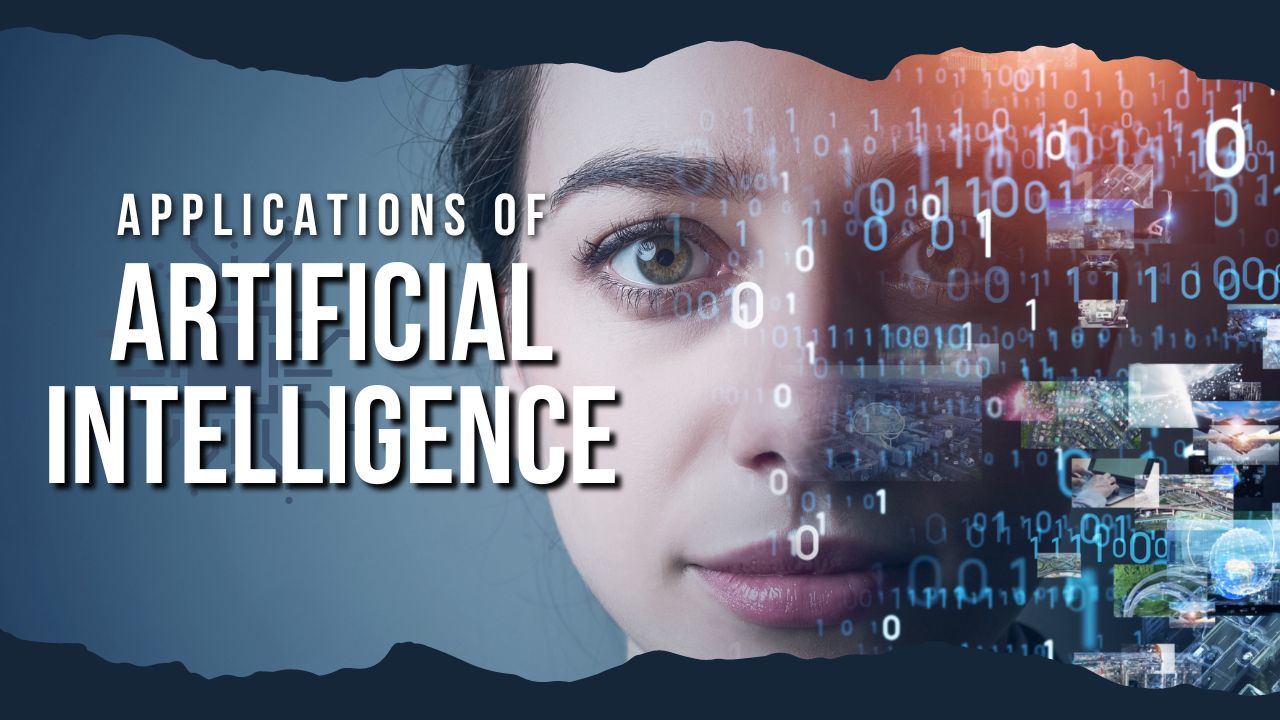

 Logicmojo - Updated Sept 5, 2025
Logicmojo - Updated Sept 5, 2025
AI, short for artificial intelligence, is a fascinating concept that refers to machines endowed with the ability to think and learn much like us humans do.
Applications of Artificial Intelligence (AI) are software programs designed to perform specific tasks by leveraging AI techniques, covering a vast scope from simple, repetitive functions to complex challenges that require human-like reasoning. Today, these applications are increasingly vital in a wide variety of industries, including healthcare, finance, retail, and manufacturing. As the underlying AI technology continues to develop, we can expect to see even more innovative and groundbreaking applications in the future.
AI applications are diverse and have become deeply integrated into both our daily routines...
The term "artificial intelligence" (AI) refers to a broad variety of technologies that enable machines to perform jobs that previously required human intelligence. It includes a wide range of skills like problem-solving, speech recognition, image recognition, and natural language processing. AI systems are intended to gain knowledge through experience, adjust to new inputs, and improve their performance over time.
Natural language processing (NLP), which enables robots to grasp and interpret human language, is one aspect of artificial intelligence (AI). NLP algorithms examine text or speech to extract meaning and enable clever answers to instructions or questions. Virtual assistants, chatbots, and language translation services all use this technology.

Image recognition is another significant aspect of AI, involving the training of machines to recognize and comprehend visual content. AI algorithms can scrutinize images or videos, identifying objects, individuals, or specific patterns within them. This capability is employed in diverse fields, including autonomous vehicles, surveillance systems, and medical diagnostics.
Speech recognition, a vital component of AI, enables machines to understand and interpret human speech. Through speech recognition algorithms, machines can convert spoken words into written text, facilitating voice commands, transcription services, and voice-controlled devices.

AI encompasses various types, each with its own capabilities. Understanding these helps us grasp the range of AI applications and their potential impact on society.
Designed to excel at a single, specific task. This is the most common form of AI today, powering voice assistants, recommendation engines, and more.
Aims to replicate human-level intelligence, possessing the ability to understand, learn, and apply knowledge across a wide range of different tasks.
A hypothetical level of AI that surpasses human intelligence in virtually every field, including scientific creativity, general wisdom, and social skills.
It's important to note that while Narrow AI is prevalent in our daily lives, General and Superintelligent AI remain largely theoretical.
Clearly define the business problem to solve and set specific success metrics. Is the goal to automate, predict, or optimize?
Gather relevant datasets, clean them to remove errors, and perform feature engineering to prepare the data for training.
Select the right AI model for the task, whether it's a neural network or a classic algorithm, and train it on your prepared data.
Integrate the trained model into a real-world system or application, often via the cloud, so it can make live decisions.
Continuously monitor the model's performance in production and retrain it with new data over time to ensure it remains accurate and effective.
AI has significantly advanced the healthcare sector in a number of areas, including patient care, medication development, personalized treatment, and diagnostics. The use of machine learning algorithms in healthcare is one way AI is changing the industry. These algorithms evaluate enormous volumes of medical data and produce better results and more effective procedures.
AI systems help medical personnel effectively discover and diagnose medical disorders in diagnostics. Medical imaging data from X-rays, MRIs, and CT scans can be analyzed by machine learning algorithms to look for anomalies and probable disorders.
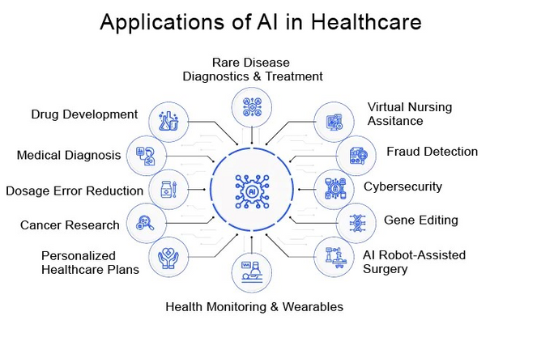
Drug discovery is a difficult and drawn-out process, and AI is essential to it. Researchers can examine enormous amounts of biological and chemical data to find prospective medication candidates by using machine learning algorithms.
Another field where AI is making great progress is personalized medicine. AI algorithms can offer specialized treatment plans and recommendations by utilizing patient-specific data, such as genetic details, medical histories, and lifestyle factors.
AI technology is also improving surgical procedures by giving surgeons helpful support. AI systems can analyze surgical images and offer insights that help with decision-making during surgeries using real-time data.
Especially with the introduction of self-driving automobiles and autonomous vehicles, AI has had a significant impact on the transportation industry. These vehicles rely on AI algorithms to perceive their surroundings, make decisions in real time, and navigate autonomously. Moreover, AI plays a crucial role in optimizing traffic flow, reducing congestion, and enhancing the overall efficiency of transportation.
Google Maps' use of AI algorithms to provide real-time traffic updates and optimize route recommendations is a prominent application of AI in transportation. Google Maps accumulates and analyzes data from a variety of sources, including GPS signals from millions of smartphones, in order to comprehend the current state of traffic. This data is processed by AI algorithms to determine traffic patterns, congestion locations, and alternate routes.
Google Maps can predict future traffic conditions based on historical data and current inputs using machine learning techniques. This allows the system to accurately determine travel times and recommend the quickest routes to users.

Moreover, the incorporation of AI algorithms into transportation systems optimizes traffic flow. For instance, AI can be utilized by traffic signal control systems to dynamically modify signal timings based on real-time traffic conditions.
AI algorithms are indispensable for the perception, decision-making, and navigation capabilities of autonomous vehicles. These algorithms analyze sensor data collected by cameras, lidar, and radar to detect and identify objects in a vehicle's surroundings, such as other vehicles, pedestrians, and obstacles.
The significance of AI in transportation transcends individual vehicles. It also includes intelligent transportation systems (ITS) that optimize overall transportation efficacy by integrating diverse AI-driven technologies.
At this point, we are all acclimated to using a variety of chatbots on the Internet. There are a variety of bots, ranging from simple customer service programs to ones that mimic human speech. Did you realize, however, that many of the bots you have been utilizing are actually examples of artificial intelligence?
ChatGPT is a prominent example of this. People initially utilized this chatbot as a mere online companion. However, you will be astonished to learn that ChatGPT is a chatbot powered by artificial intelligence. OpenAI's large language model (GPT 3) powers ChatGPT. Additionally, the company has released the GPT-4, an LLM available to Plus users.
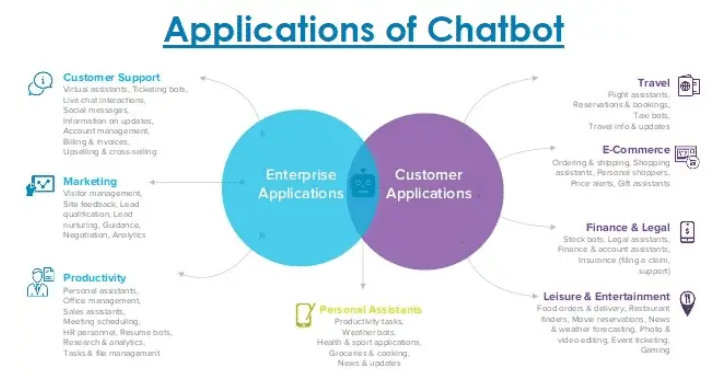
The robot has been programmed to imitate human responses and complete a variety of tasks. People initially used the chatbot for basic conversations, but it soon became apparent that ChatGPT is capable of virtually everything online.
The AI chatbot is capable of writing blog posts, generating and debugging complex code, weaving vivid stories, providing recipes, and answering virtually any query posed to it. This gives ChatGPT a great deal of power to assist in any situation. OpenAI will shortly release modules for ChatGPT that will grant it Internet access. Remember that ChatGPT or its alternatives is one of the finest examples of artificial intelligence in 2025 the next time you use them. And if you already use it, you will be astonished by the cool things you can do with ChatGPT.
The use of AI has drastically changed several procedures and jobs in the banking sector. These days, financial organizations use AI algorithms to automate processes, improve customer service, and improve investment strategies.
Fraud detection is an essential use of AI in the banking industry. Massive amounts of transactional data may be analyzed in real-time by AI algorithms, which can then be used to identify patterns and questionable activity. These algorithms may adapt to and learn from new fraud trends by utilizing machine learning techniques, continually enhancing their capacity to recognize and stop fraudulent transactions.
Another area where AI is crucial is risk assessment. To evaluate the possible risks connected with loans, investments, and financial portfolios, AI algorithms can examine large data sets, including historical financial data, market patterns, and macroeconomic indicators.
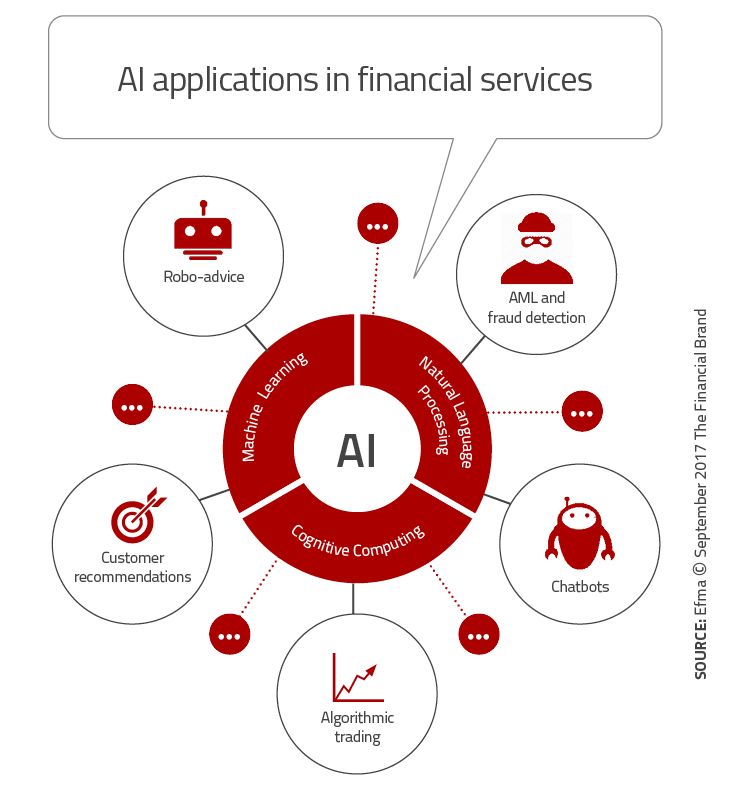
AI-powered algorithmic trading has completely changed the financial markets. Large-scale market data analysis, pattern recognition, and trading execution using pre-established rules and strategies are all capabilities of AI algorithms.
AI-powered predictive analytics has revolutionized portfolio management and investment techniques. Huge volumes of financial data, market trends, and past performance can be analyzed by AI algorithms to find patterns and forecast future market moves.
Virtual assistants like Siri, Cortana, Google Assistant, and others have ingrained themselves into our daily lives and improved the convenience and enjoyment of chores. In order to offer a wide range of services and features, these digital assistants make use of artificial intelligence (AI) technologies.
The ability of virtual assistants to recognize and process speech patterns is one of its fundamental capabilities. They can receive and interpret spoken instructions or questions with accuracy thanks to sophisticated speech recognition algorithms.
Another essential element of virtual assistants is natural language processing (NLP). Even in complicated and confusing language, NLP enables the program to comprehend the context, intent, and meaning behind user inquiries.
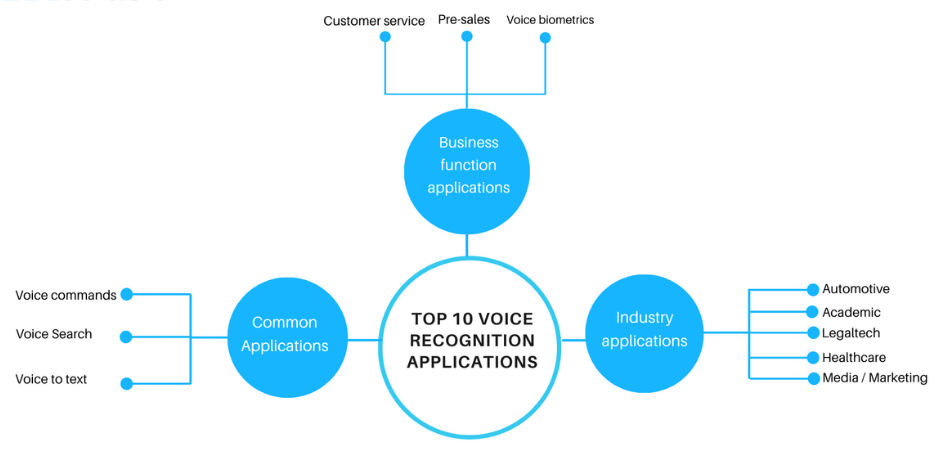
The capacity of virtual assistants to adapt and tailor their responses based on user behavior and preferences is one of its amazing features. These assistants are able to tailor their ideas, recommendations, and reminders to suit specific needs by keeping an eye on things like working hours, screen time, usage habits, and user interactions.
Additionally, virtual assistants may assess user emotions and respond appropriately by using techniques like sentiment analysis. The assistants can better serve users by responding appropriately and sympathetically by comprehending the sentiment underlying their questions or utterances.
AI has made significant contributions to the field of education by revolutionizing the way students learn and educators teach. AI-based educational tools offer personalized learning experiences that adapt to individual students' needs, leading to more effective and engaging instruction.
Intelligent tutoring systems are one of the key applications of AI in education. These systems utilize AI algorithms to analyze student performance, identify areas of strength and weakness, and provide customized instruction and feedback.
Automated grading is another area where AI simplifies and streamlines the educational process. AI algorithms can analyze and evaluate student work, such as essays, assignments, or quizzes, providing objective and consistent grading.
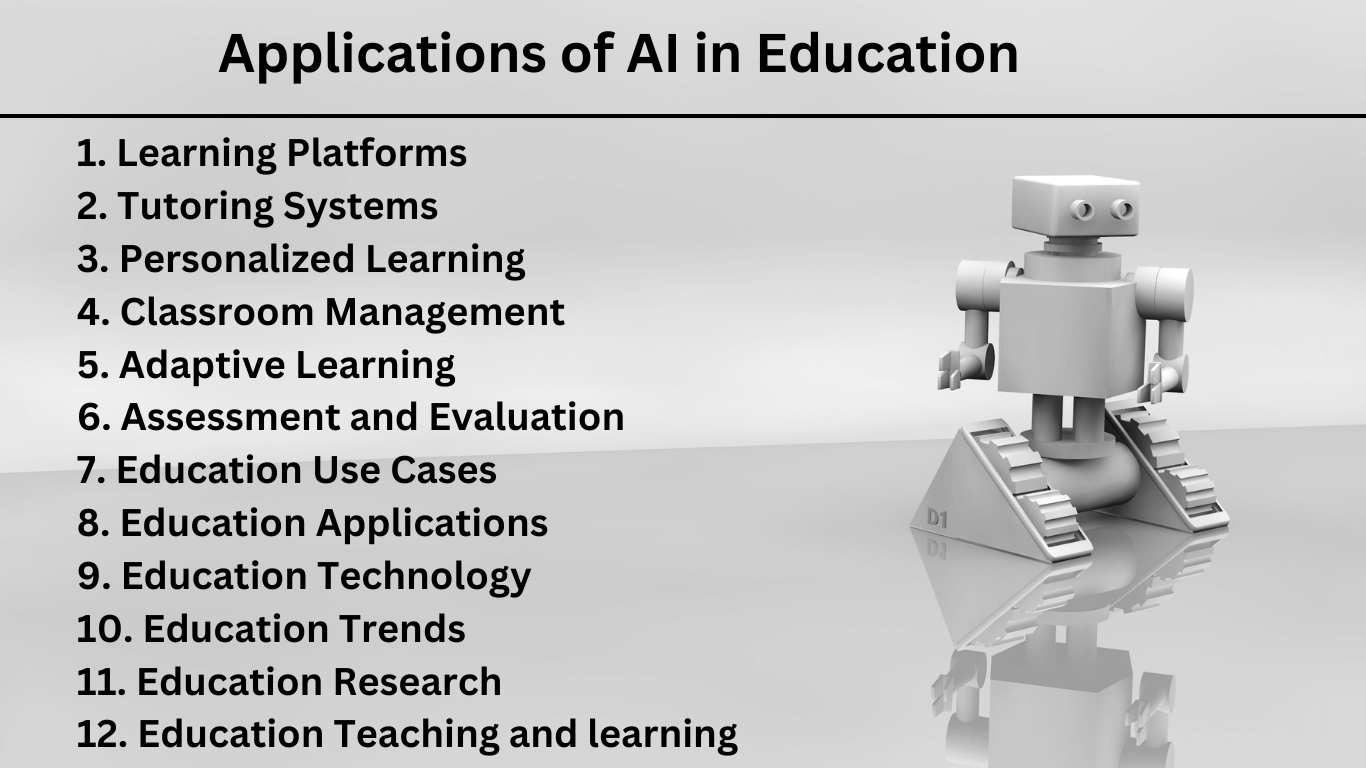
AI also plays a role in the creation of educational content. With natural language processing and machine learning algorithms, AI can generate educational materials, such as quizzes, lesson plans, and interactive activities. This automation of content creation enhances efficiency, provides a wide range of resources, and supports educators in designing engaging and relevant learning experiences.
Virtual learning environments powered by AI technologies have become increasingly popular. These environments simulate real-world scenarios, providing interactive and immersive experiences for students. AI algorithms can analyze student interactions within the virtual environment, adapting the content and challenges to meet individual needs..
Overall, AI has transformed education by providing personalized learning experiences, automating grading processes, facilitating content creation, and creating virtual learning environments.
AI is becoming a crucial component of social media platforms, altering how people communicate, share, and engage with one another online. Social media platforms make use of AI technologies to improve content recommendations, user experiences, and other features.
The curation of tailored material on social media is a well-known application of AI. AI algorithms are used by websites like Facebook, Instagram, and Twitter to examine user behavior, preferences, and interactions. The platforms create customised content feeds based on this data, providing users with postings, stories, and suggestions catered to their interests. The material that consumers see in their feeds is regularly improved and optimized by AI algorithms, which take into account elements like past engagements, likes, and conversations.
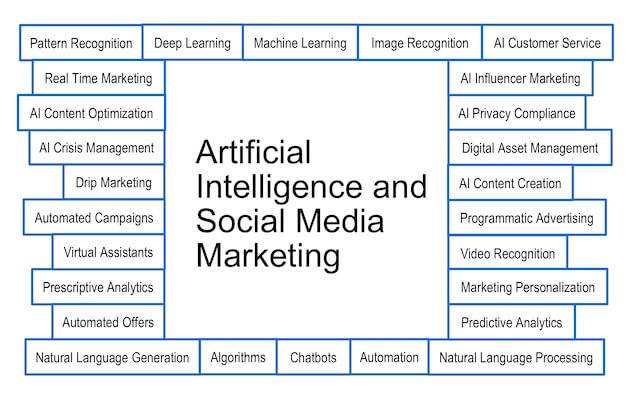
Systems that make recommendations using AI are essential in social media apps. To recommend connections, friends, organizations, and material that is pertinent to the user, these systems examine user data, including past interactions and activities.
On social media networks, AI also enables functions like facial recognition and image recognition. Facebook, for instance, makes use of AI algorithms to identify and recommend tags for people in pictures.
The video game industry has undergone a transformation because to AI technology, which has improved gameplay and produced more dynamic, immersive virtual worlds. The development of intelligent non-player characters (NPCs) and adaptable gameplay is one of the primary areas where AI excels in gaming.
NPCs are artificially intelligent characters that interact with players in video games' virtual worlds. NPCs can replicate human behavior thanks to AI systems, which makes them more lifelike and sensitive to player input.
The Elder Scrolls V: Skyrim is a well-known game that uses AI to great effect. NPCs in this game behave in a dynamic way, enabling an immersive and interesting gaming experience. The game world is made more realistic by the fact that NPCs have their own daily habits, such as eating, sleeping, and going to work.
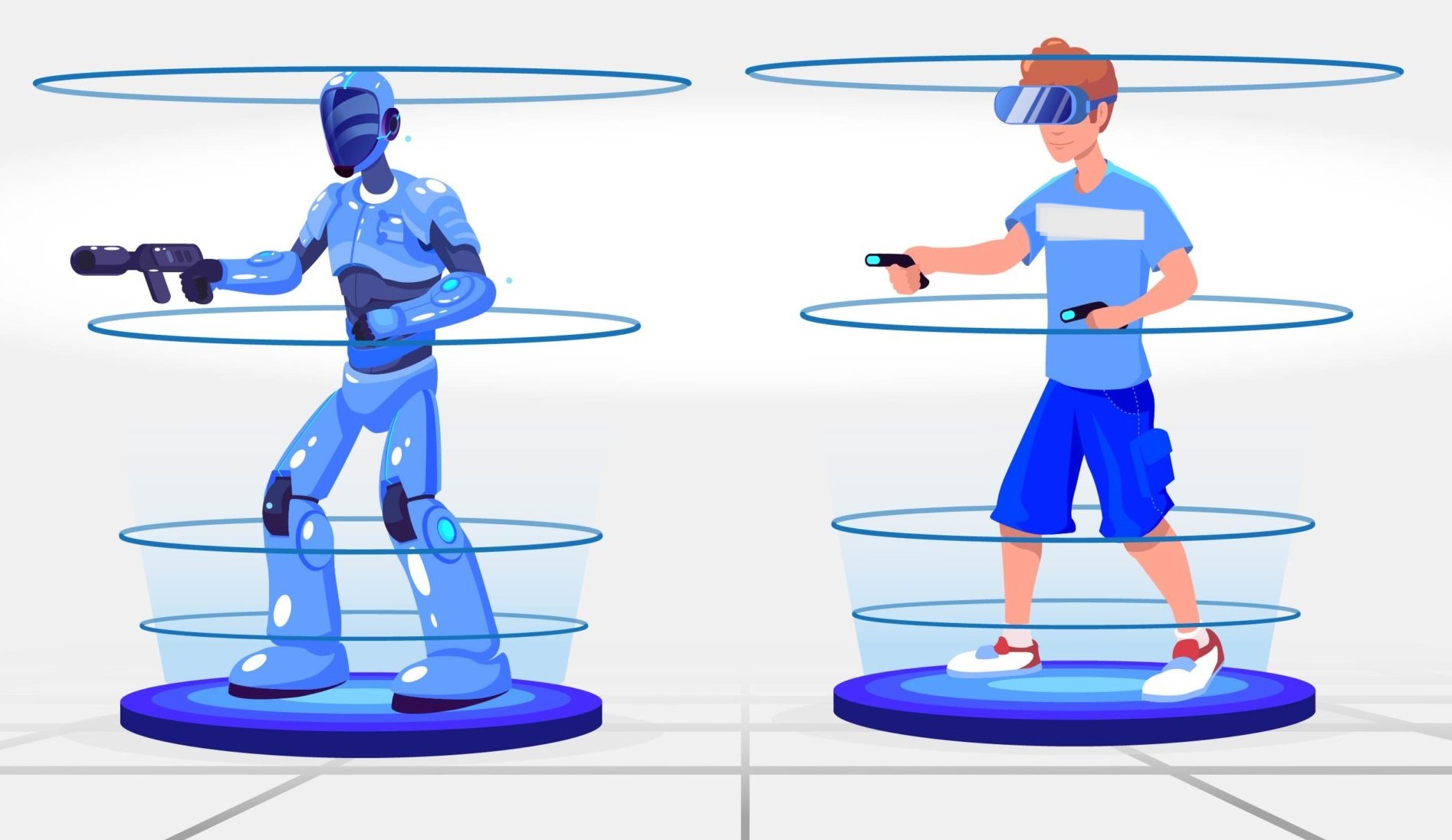
NPCs can respond to the player's decisions and actions thanks to AI systems. For instance, if a player steals anything, NPCs may get suspicious and report the theft to the police, which will have an effect on the game's virtual world.
Another area in which AI excels in gaming is adaptive gameplay. AI algorithms can examine player preferences and behavior to modify the game's difficulty or add new challenges as necessary. Because of this adaptive feature, players of all skill levels will always find the game to be interesting and difficult.
AI in Agriculture is a transformative approach that leverages technology to optimize farming practices and improve agricultural outcomes. Agriculture has undergone a digital transformation, where traditional farming methods are increasingly supplemented or replaced by digital technologies. This shift aims to enhance efficiency, reduce resource wastage, and boost productivity in farming.
Artificial Intelligence (AI) is playing a crucial role in this digitalization of agriculture. AI refers to computer systems that can perform tasks typically requiring human intelligence, such as problem-solving, learning, and decision-making.
AI-powered agricultural robots are designed to perform a wide range of tasks, from planting and harvesting crops to weeding and monitoring crop health. These robots can work autonomously and with precision, reducing the need for human labor and ensuring consistent results.
AI systems equipped with sensors and cameras are used to monitor soil conditions, crop health, and environmental factors in real-time. These systems collect data on moisture levels, nutrient content, disease outbreaks, and weather conditions. The AI algorithms analyze this data to provide actionable insights to farmers.
AI in agriculture offers several advantages to farmers:
- Increased Efficiency: AI-powered machinery and systems can perform tasks more efficiently and with greater precision, saving time and resources.
- Resource Optimization: By providing real-time data and insights, AI helps farmers optimize the use of resources like water, fertilizers, and pesticides, reducing waste and costs.
- Higher Yields: Through better crop management and disease detection, AI can contribute to higher crop yields and improved crop quality.
- Reduced Labor Dependency: Automation and robotics reduce the need for manual labor, addressing labor shortages in agriculture.
- Sustainable Practices: AI assists in adopting more sustainable farming practices by minimizing environmental impact and conserving resources.
E-commerce has undergone significant transformations with the integration of Artificial Intelligence (AI) and Machine Learning (ML) technologies. These advancements have revolutionized the online shopping experience, making it more personalized, efficient, and convenient for both businesses and customers.
One key area where AI has greatly impacted e-commerce is product recommendations. AI algorithms analyze customer data, such as browsing history, purchase behavior, and preferences, to provide tailored product suggestions. For example, platforms like Amazon use AI-powered recommendation systems to offer "Customers who bought this also bought" or "Frequently bought together" suggestions.
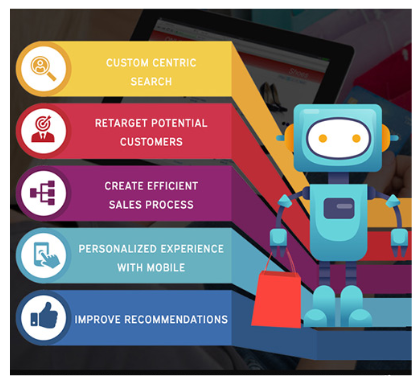
Chatbots and virtual assistants are becoming increasingly prevalent in e-commerce, providing personalized customer support and assistance. These AI-powered chatbots can handle customer inquiries, answer questions about products or services, and provide recommendations.
Fraud detection and prevention are critical aspects of e-commerce, and AI plays a vital role in this domain. AI algorithms can analyze customer data, transaction patterns, and other variables to identify suspicious activities and potential fraud.
AI has significantly enhanced face detection and recognition, enabling applications that enhance security, streamline processes, and enhance user experiences. Face detection and recognition algorithms employ Artificial Intelligence (AI) technologies, such as computer vision and machine learning, to identify and authenticate individuals based on their facial characteristics.
Face detection relies heavily on the ability to locate and identify features in images and video footage. Face-containing regions of an image are determined by AI algorithms that analyze pixels and patterns.

Face ID on iPhones is a real-world example of face detection and recognition powered by artificial intelligence. Face ID employs a combination of depth-sensing technologies, such as structured light, and artificial intelligence algorithms to detect and authenticate a user's face. A detailed 3D map of the user's visage is generated by projecting and analyzing thousands of infrared dots. This depth map and AI algorithms enable the device to accurately and securely verify the user's identity.
Beyond security, face detection and recognition technology has a variety of applications. It is utilized for automated attendance systems in schools and workplaces, thereby reducing manual processes and enhancing productivity. Moreover, social media platforms use face recognition to enable users to tag and identify associates in photos.
Artificial intelligence (AI) has completely changed the marketing industry by enabling cutting-edge tools and methods for data analysis, process automation, and individualized client experiences. Businesses can make data-driven decisions, improve targeting, and optimize campaigns with the help of AI-powered marketing.
Data analysis is one of the main uses of AI in marketing. Numerous client data elements, including as demographics, browsing patterns, past purchases, and social media activities, can be processed by AI algorithms.
Additionally, AI improves client targeting and segmentation. Customers can be divided into distinct categories using AI algorithms based on a variety of factors, like interests, conduct, or buying habits. Because of this, marketers may better target certain client categories with relevant and engaging messaging, offers, and incentives.
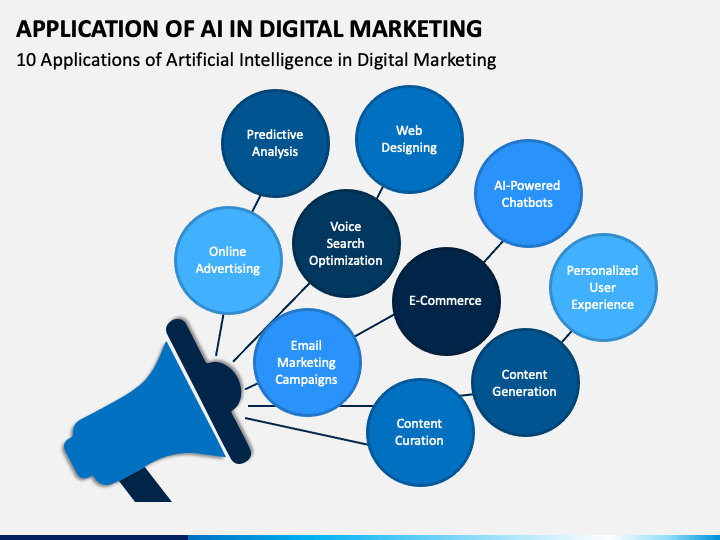
AI-powered chatbots are becoming more and more common in marketing. These virtual assistants are able to communicate with clients in real-time, giving prompt answers to questions, making suggestions for goods or services, and helping with transactions.
Netflix's recommendation engine serves as a practical illustration of AI in marketing. Utilizing AI algorithms, Netflix examines ratings, historical data, and user viewing behaviors to offer individualized content recommendations. Since the recommendations get better over time depending on user interactions and comments, this has largely contributed to their success in maintaining users' engagement and satisfaction.
AI technology has greatly improved grammar check and autocorrection tools, making written communication more accurate and polished. These tools leverage Artificial Intelligence (AI) algorithms to identify and correct grammar, spelling, and punctuation errors, enhancing the quality of written content.
One of the key points in AI-powered grammar check is the ability to detect and highlight grammatical errors in text. AI algorithms analyze sentence structure, syntax, and language rules to identify potential mistakes such as subject-verb agreement, verb tense, or word order errors..
AI-powered autocorrection functions similarly by analyzing the context and identifying potential spelling and typographical errors in written content. Autocorrection tools employ AI algorithms to compare words and phrases against a dictionary or language model.

A real-life example of AI in grammar check and autocorrection is the widely used Grammarly platform. Grammarly employs AI algorithms to analyze text and provide suggestions for grammar, spelling, punctuation, clarity, and conciseness improvements. It offers real-time feedback, highlighting errors and providing explanations for corrections.
The strength of AI-powered grammar check and autocorrection lies in their ability to continuously learn and adapt. These tools leverage machine learning techniques to analyze large datasets of human-written text, allowing the algorithms to learn grammar and language patterns.
AI has transformed the way recommendation searches are conducted, improving the accuracy and personalisation of suggestions. Recommendation systems analyze enormous quantities of user data using Artificial Intelligence (AI) algorithms and offer personalized recommendations based on unique interests and behavior.
Collaborative filtering is a crucial component of recommendation searches powered by AI. This method looks for trends and user commonalities by analyzing user activity, including past purchases, browsing history, and ratings. The algorithm can make recommendations for products that other users who have similar tastes have loved by discovering individuals with comparable preferences.
Another strategy used by recommendation systems is content-based filtering. In this approach, AI algorithms examine the attributes and traits of the objects to produce suggestions.
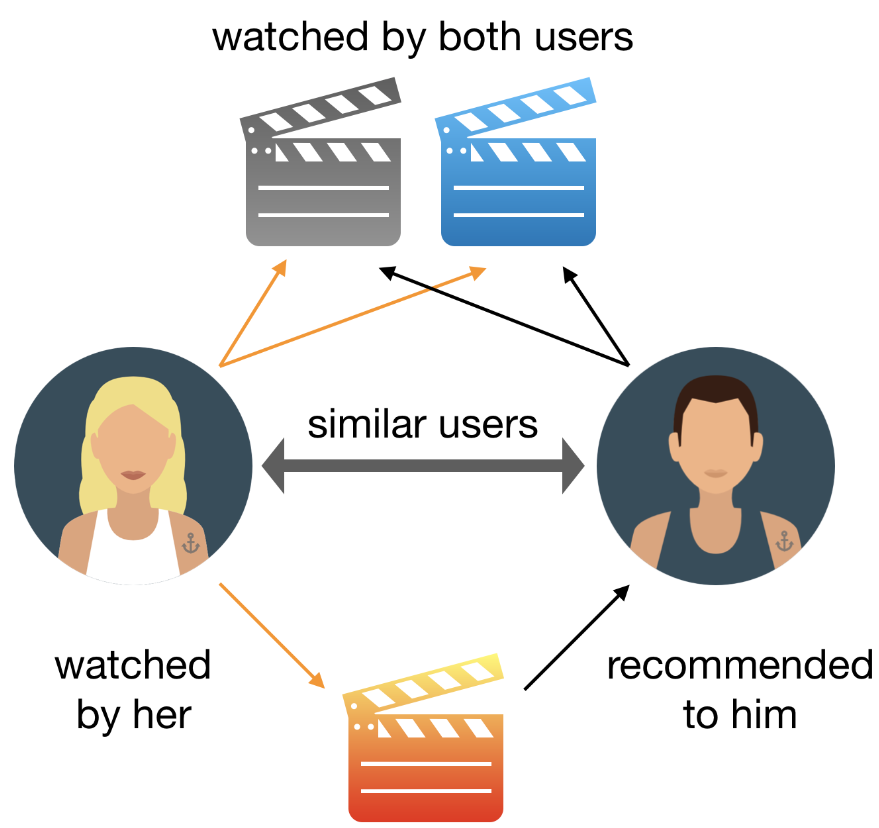
Hybrid recommendation systems, which combine many methodologies to produce recommendations that are more precise and varied, are also made possible by AI. To produce suggestions that consider both user behavior and item qualities, these systems can use collaborative filtering, content-based filtering, and other techniques. This guarantees a more thorough and unique recommendation experience.
Netflix is one streaming service that uses AI to boost suggestion searches. For the purpose of generating individualized movie and television show suggestions, Netflix analyzes user information such as viewing preferences, ratings, and interactions. Netflix provides content that is in line with the User by using approaches such as collaborative filtering and content-based filtering.
AI has transformed the music and media recommendation landscape, providing personalized suggestions based on user preferences and behavior. Applications like Netflix, Spotify, YouTube, and others leverage AI algorithms to analyze user data and deliver tailored recommendations, enhancing the user experience.
One of the main aspects of AI-powered music and media recommendation is the analysis of user behavior. These platforms collect data on user interactions, such as the songs played, playlists created, and genres explored. AI algorithms analyze this data to identify patterns and trends, understanding the user's likes and interests.
Pattern recognition plays a crucial role in AI-based recommendation systems. The algorithms examine the user's listening or viewing history to identify patterns in their choices, such as preferred genres, artists, or content themes.
Real-time context is another key factor in AI-based recommendations. These systems take into account factors like the user's current mood, time of day, or even the weather to deliver more personalized suggestions.
A real-life example of AI-driven music and media recommendation is YouTube's recommendation system. YouTube's AI algorithms analyze a user's viewing history, interactions, and content preferences to generate a personalized feed of recommended videos. By leveraging AI techniques like collaborative filtering and pattern recognition, YouTube suggests videos that align with the user's interests, enhancing their browsing and discovery experience.
AI has revolutionized e-payment systems, enhancing security, fraud detection, and user experience. Through the use of Artificial Intelligence (AI) algorithms, e-payment platforms analyze vast amounts of data, detect patterns, and make intelligent decisions to facilitate seamless and secure transactions.
One of the main key points in AI-powered e-payments is fraud detection and prevention. AI algorithms analyze numerous data points, including transaction history, user behavior, location, and device information, to identify suspicious activities and potential fraudulent transactions.
AI algorithms also contribute to the user experience in e-payments. Through data analysis, AI can predict and suggest the most relevant payment methods for individual users.
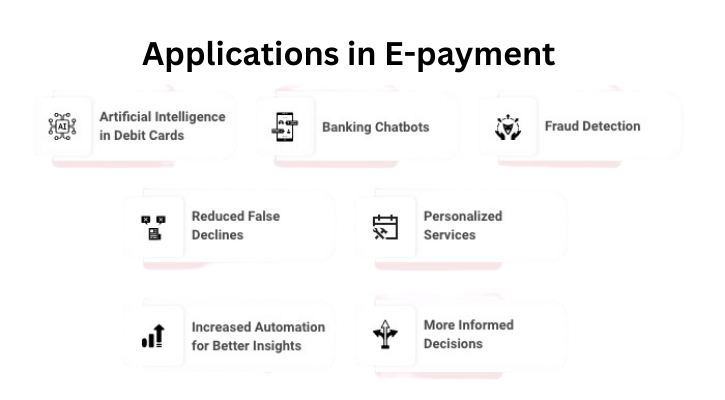
Personalized recommendations are another aspect where AI plays a role in e-payments. AI algorithms analyze user data, including purchase history, browsing behavior, and demographic information, to provide tailored recommendations for products or services.
Risk assessment is crucial in e-payments, and AI contributes to this aspect as well. AI algorithms can assess the risk associated with a particular transaction by analyzing various factors, such as transaction value, user behavior, and historical patterns.
A real-life example of AI in e-payments is Stripe Radar, a fraud prevention tool offered by the payment processing company Stripe. Stripe Radar employs AI algorithms to analyze patterns and detect fraudulent activities in real-time.
One of the most common and vital uses of AI is data security, which is one of the most crucial assets of any tech-oriented company. Data security is essential for any institution to fulfill both legal and operational obligations since confidential data, including consumer data (such credit card information) and organizational secrets, is held online. These days, keeping data out of the wrong hands is as important as it is challenging, thus many firms use AI-based security solutions.
Discovers Unknown Threats, A human might not be able to identify all of the risks that a company faces. For a number of reasons, hackers launch hundreds of millions of attacks each year. Severe network damage can be brought on by unknown threats. Even worse, they can already be having an effect while you don't even realize it.
Modern solutions should be utilized to prevent attacks as attackers experiment with various strategies, from simple malware assaults to sophisticated malware assaults. One of the best security tools for identifying and stopping unanticipated attacks from wrecking havoc on a company is artificial intelligence.
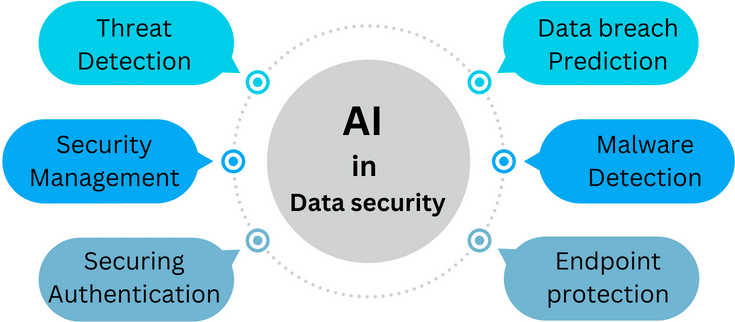
Threat mitigation, Cybersecurity firms are continually creating new artificial intelligence technologies. AI has evolved to the point that it can now identify updates or even system faults. It would immediately cut off anyone trying to take advantage of those weaknesses. An excellent weapon for averting any threat would be artificial intelligence. Additional firewalls could be installed in addition to fixing dangerous code flaws.
Dealing with Threats, After the threat has entered the system, it takes place. As was previously said, AI is utilized to identify viruses or malware and identify anomalous behavior. AI is presently fighting malware or viruses in the suitable way. The main components of the response include getting rid of the infection, fixing the problem, and treating the damage. Finally, AI ensures that a similar situation won't occur again and implements the necessary precautions.
AI has revolutionized online advertising by leveraging cutting-edge technologies to deliver targeted and personalized ads. Through the use of Artificial Intelligence (AI) algorithms, online ad agencies are able to gain insights into user preferences, interests, and requirements, allowing them to present advertisements that correspond to individual profiles.
Collecting and analyzing user data is one of the most important aspects of AI-powered online advertising. To comprehend user preferences and interests, AI algorithms analyze a variety of data points, including browsing behavior, search history, social media interactions, and demographic information. This information is then used to develop detailed user profiles that inform the process of ad targeting.
Online advertising is heavily dependent on machine-learning algorithms. These algorithms analyze massive user behavior datasets to identify patterns and correlations. AI algorithms can forecast the likelihood of user interest in specific products and services by identifying patterns in user data.
Natural Language Processing (NLP) is an additional application of AI in online advertising. Some applications use voice recognition technology to listen to conversations and extract keywords and phrases that may indicate user interests or requirements.
Bidding in real time is a prevalent occurrence in AI-driven online advertising. An ad exchange platform executes a real-time auction when a user visits a website or app, allowing advertisers to bid for ad placement.
Google Ads, Google's advertising platform, is a practical illustration of AI in online advertising. Google Ads uses artificial intelligence (AI) algorithms to analyze user search queries, browsing behavior, and demographic information.
Due to its capacity to simulate human intelligence, examine enormous volumes of data, and make independent judgments, AI is employed in a wide range of applications. Here are a few main justifications for using AI:
AI makes it possible to automate boring and repetitive operations, freeing up human resources to work on more challenging and innovative projects.
AI is excellent at quickly and accurately evaluating enormous amounts of data to find patterns, trends, and connections that humans might not see.
AI enables tailored experiences by comprehending and adjusting to each user's preferences, powering recommendation systems and customized content.
AI systems are excellent at making decisions and solving problems in complex fields like logistics, resource allocation, and strategy planning.
AI-powered chatbots and virtual assistants offer immediate and individualized customer help, understanding natural language to respond to inquiries.
Based on historical data and patterns, AI algorithms can forecast outcomes and trends, improving resource planning and risk management.
AI enables quicker diagnoses, individualized treatment regimens, and drug discovery, enhancing patient care and potentially saving lives.
AI algorithms can spot suspicious trends, abnormalities, or potential security concerns to stop fraud and safeguard sensitive data.
AI-powered robots are used in situations where human presence is restricted or dangerous, such as deep-sea exploration and catastrophe response.
Artificial intelligence (AI) has a number of advantages and benefits that have a favorable influence on many different processes and businesses.
Increased productivity and efficiency are two major advantages of AI. Automating monotonous processes using AI technologies enables firms to optimize operations and boost overall efficiency. AI reduces the need for manual involvement, which speeds up procedures and reduces human error. Companies are able to more efficiently distribute resources, which reduces costs and saves time.
AI's capacity to improve decision-making processes is another benefit. Large-scale data analysis, pattern recognition, and insight generation are all capabilities of AI systems. Decision-makers can use the useful information provided by this data-driven strategy to make more precise and informed choices.
Another important advantage of AI is the automation of repetitive jobs. Businesses can automate repetitive and boring operations by using AI technologies, freeing up human resources to work on more challenging and innovative projects.
Chatbots and virtual assistants with AI capability enhance the client experience. These sophisticated tools offer quick, individualized customer service that immediately responds to concerns and increases consumer satisfaction and loyalty.
Another important benefit of AI is sophisticated data analysis. Massive datasets may be quickly and accurately analyzed by AI systems to uncover insightful patterns that are not always obvious to humans, helping businesses spot new opportunities.
In conclusion, AI offers a variety of advantages, such as improved decision-making, automated repetitive jobs, enhanced customer experience, and advanced data analysis. These benefits give companies the ability to increase customer happiness, streamline processes, and acquire a competitive edge.
While AI offers tremendous benefits, it's important to acknowledge its challenges. These are critical topics of discussion as the technology becomes more integrated into society:
AI systems require vast amounts of data to learn, which raises significant concerns about how personal data is collected, used, and protected from misuse or cyberattacks.
If an AI model is trained on biased data, it can perpetuate and amplify existing societal biases. Ensuring fairness in AI algorithms is a major challenge.
As AI automates more tasks, there are concerns about the displacement of human workers. The societal shift requires a focus on reskilling and education for the jobs of the future.
When an AI system makes a mistake, determining who is responsible is complex. Creating "explainable AI" to understand its decision-making process is a key area of research.
Future trends in artificial intelligence (AI) hold the potential to shape various industries and transform our daily lives. Here are some key areas where significant advancements are expected:
Ongoing research will lead to more sophisticated AI capabilities in pattern recognition, prediction, and decision-making, allowing more complex tasks to be automated.
AI combined with IoT will create a network of interconnected systems that collect and analyze real-time data, enabling smart homes, smart cities, and industrial automation.
Advancements in NLP will improve AI's ability to understand and generate human-like language, leading to more natural interactions with voice assistants and chatbots.
AI-driven robotics will continue to reshape industries. Collaborative robots (cobots) will work alongside humans, increasing productivity and safety in manufacturing, healthcare, and logistics.
XAI focuses on making AI systems more transparent. This is essential for building trust, especially in critical fields like healthcare and finance, by explaining how AI arrives at its decisions.
The integration of AI with Augmented and Virtual Reality will create highly immersive and interactive experiences for gaming, training, education, and design.
Inspired by the applications of AI? Starting a career in this exciting field requires a solid foundation in several key areas. Here's a simple roadmap to get you started:
Python is the undisputed leader in the AI and Machine Learning world due to its simplicity and extensive libraries like TensorFlow, PyTorch, and Scikit-learn.
Focus on understanding the fundamentals of Statistics, Probability, and Linear Algebra. These mathematical concepts are the bedrock upon which all AI algorithms are built.
Dive into topics like supervised vs. unsupervised learning, regression, classification, and neural networks. These are the practical skills you'll use daily as an AI professional.
Theory is not enough. Apply your knowledge by building your own projects, whether it's a simple prediction model or an image recognition app. This will build a strong portfolio to showcase to employers.
While self-study is possible, a structured program can accelerate your learning path. Courses like those offered by Logicmojo provide a comprehensive curriculum, expert guidance, and the problem-solving skills needed to crack technical interviews.
This article was written based on information from leading authorities and publications in the field of artificial intelligence. For readers who wish to learn more, we recommend the following resources:
Artificial intelligence has become an integral part of various industries, transforming processes, and enhancing efficiency. Its applications span healthcare, finance, transportation, customer service, manufacturing, education, marketing, and gaming. AI offers benefits such as increased productivity, advanced data analysis, and improved decision-making. However, ethical considerations like job displacement, bias, privacy, and accountability must be addressed. The future holds promising trends, including machine learning advancements, IoT integration, NLP enhancements, robotics, explainable AI, and AI combined with AR/VR technologies. As AI continues to evolve, its impact on society and daily life will be profound.
Good luck and happy learning!
Artificial intelligence (AI) encompasses various applications that simulate human intelligence in machines. Key AI applications include:
1. Expert Systems: AI systems designed to mimic the decision-making abilities of human experts in specific domains.
2. Natural Language Processing: AI technology that enables computers to understand, interpret, and generate human language.
3. Speech Recognition: AI systems that can transcribe spoken language into text and perform voice commands.
4. Machine Vision: AI-driven computer vision systems that analyze and interpret visual information from images and videos.
AI in education brings numerous advantages, such as: 1. Improved Accessibility, 2. Personalized Tutoring, 3. Automated Grading and Administration, and 4. Streamlined Workflows for institutions.
John McCarthy is widely recognized as the "father of Artificial Intelligence". He was an American computer scientist who not only coined the term "artificial intelligence" but also played a foundational role in its development alongside other pioneers like Alan Turing.
The four types of AI are:
1. Reactive Machines: Reacts to present scenarios with no memory (e.g., IBM's Deep Blue).
2. Limited Memory: Uses past experiences to inform decisions (e.g., self-driving cars).
3. Theory of Mind: Can understand human emotions and thoughts (largely theoretical).
4. Self-Awareness: A hypothetical, conscious AI that has its own sense of existence.
The five major branches of artificial intelligence (AI) are:
1. Machine Learning: Training machines to learn from data.
2. Deep Learning: A subset of ML using complex neural networks.
3. Natural Language Processing (NLP): Enabling machines to understand human language.
4. Computer Vision: Allowing machines to interpret visual information.
5. Explainable AI (XAI): Making AI decisions transparent and understandable.
AI has numerous business applications, including: automation of financial processes, fraud detection, financial forecasting, personalized marketing, supply chain optimization, and HR and talent management.
In agriculture, AI is used for: optimizing crop production through data analysis, real-time monitoring of crop health with drones and sensors, automated harvesting with robotics, and precise weed detection to reduce herbicide use.
Professor H.N. Mahabala played a pioneering role in introducing AI to India during the 1960s. A significant step forward was the creation of Knowledge-Based Computing Systems (KBCS) in 1986, an initiative by the UNDP.
While "popular" can mean many things, conversational AIs like OpenAI's ChatGPT and virtual assistants like Google Assistant are among the most widely used and recognized AI applications globally due to their advanced natural language processing and integration across countless devices.





